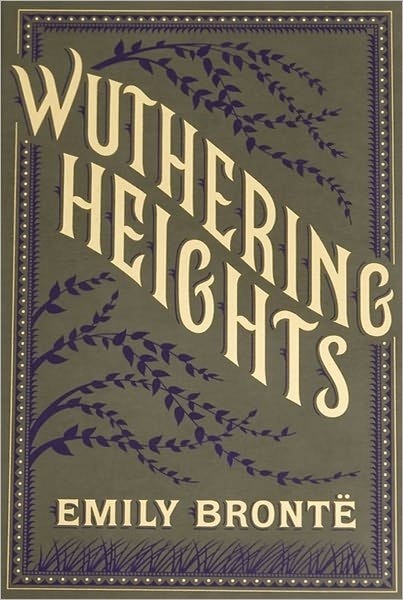Though the Bronte sisters are perhaps one of the most well-known families of writers in English literature, when they published their work in the nineteenth century, they were known as neither Brontes nor as sisters.
Hoping to avoid the biased criticism and claims of insubstantiality levied against the works of women, Anne, Charlotte, and Emily Bronte published under the names Acton, Currer, and Ellis Bell.
Their first publication was a collection of the sisters’ poems, and though the volume was not successful at the time, later assessment of Emily Bronte’s poems has, according to Encyclopedia Britannica, since distinguished her as the preeminent poetic talent of the three sisters.
Though a gifted poet, Emily Bronte’s more well-known work is her novel Wuthering Heights, which tells the story of Heathcliff, who is taken in by the Earnshaw family, and his love for Catherine Earnshaw. While this love is reciprocated, Catherine ultimately chooses a man of higher status as her husband.
Wuthering Heights is often viewed in the public consciousness as one of literature’s great romances, and while Heathcliff’s love for Catherine is indeed passionate and persists intensely even past her death, the novel is hardly the kind of inspirational love story found in popular contemporary romance novels. Heathcliff’s passion easily transforms into obsession, and his devotion to Catherine is often exemplified through violence and revenge.
In fact, Wuthering Heights is arguably more a story about revenge and abuse than a story about love–spurned by the woman he loves due to his social standing and having suffered mistreatment in his childhood, Heathcliff works to gain power and money and then replicates the abuse done to him on the next generation. Though Heathcliff’s actions are hardly justifiable, the mistreatment he suffered, partly the result of his low class and the fact that he is, as Bronte describes, “a dark-skinned gipsy,” adds complexity to his vengeance and invites consideration of the restrictive and damaging nature of strict class divisions.
Heathcliff’s intensity is matched by the intensity of the setting surrounding him for much of his life, the titular Wuthering Heights. Much of the novel takes place in either Wuthering Heights, the Earnshaw’s estate which is subject to an “atmospheric tumult” in “stormy weather,” and the more sedate Thrushcross Grange, the lusher home of Edgar Linton, who Catherine Earnshaw eventually marries.
Both Wuthering Heights and Thrushcross Grange are on the Yorkshire moors, and when they are young, Catherine and Heathcliff spend time out on the moors together. Emily Bronte herself spent time on the moors as a child, and her mother, like the Earnshaws’, passed away when she was young. Though the Encyclopedia Britannica notes that Emily distinguishes herself from her sisters in that she makes “no use of the events of her own life and show[s] no preoccupation with a spinster’s state or a governess’s position,” these similarities suggest that the novel was shaped in part by the settings and circumstances of her childhood.
Emily Bronte died of tuberculosis not long after the publication of Wuthering Heights, and she did not live to see the novel become a celebrated work of English literature. Following the novel’s publication, Wuthering Heights received criticism for being “too savage, too animal-like, and clumsy in construction” (Encyclopedia Britannica). Though seen as a failing of the novel at the time, the novel’s savage emotional intensity is part of what cements Emily Bronte’s literary legacy and is part of why Wuthering Heights still invites contemplation and consideration more than a hundred years after its publication.











Leave a Reply
You must be logged in to post a comment.